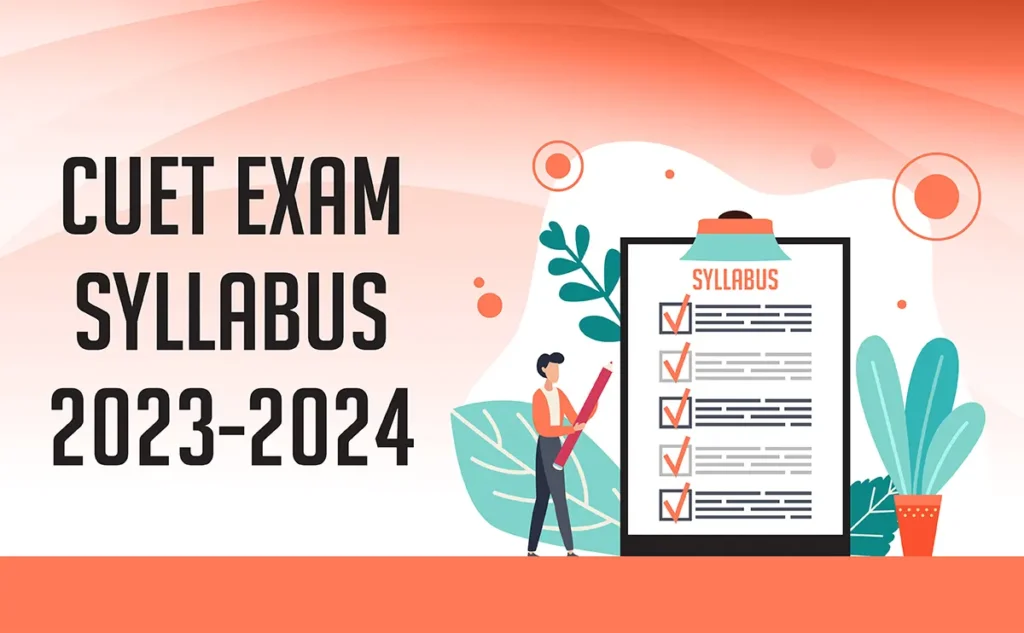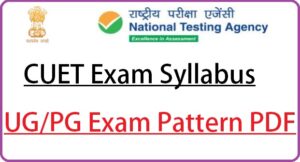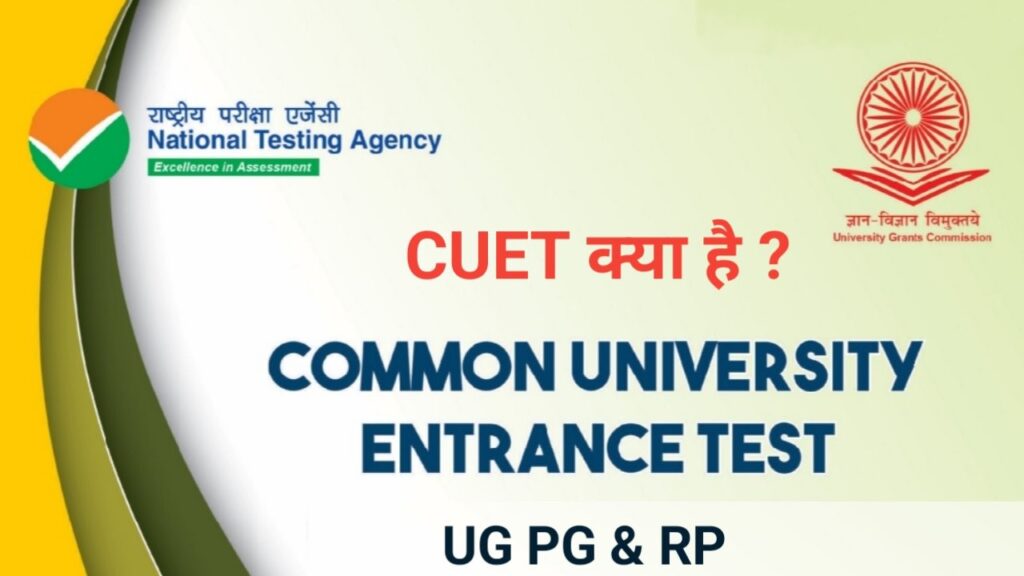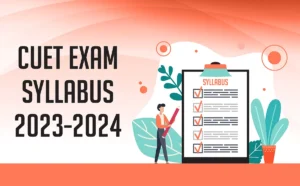1. Introduction
1.1 What is the CUET Exam?
CUET Exam Syllabus- The Chittagong University of Engineering and Technology (CUET) conducts the CUET exam as an entrance test for students seeking admission to undergraduate engineering and technology programs. This exam assesses the candidates’ knowledge and skills in various subjects and serves as a crucial criterion for their selection.
1.2 Importance of Knowing the CUET Exam Syllabus
Knowing the CUET exam syllabus is paramount for any aspirant aiming to crack the exam successfully. It acts as a roadmap for candidates, guiding them through the subjects they need to prepare, the weightage of each section, and the overall exam structure.
2. Understanding CUET Exam Syllabus
2.1 Sections Covered in CUET Exam
The CUET exam comprises four main sections, each testing the candidates’ abilities in different areas. These sections include:
- Mathematics
- English
- General Knowledge
- Analytical Skills
2.2 Subjects Included in the Syllabus
Under each section, specific subjects are covered, testing the candidates’ proficiency in diverse areas. Some of the subjects included in the CUET exam syllabus are:
- Mathematics: Algebra, Trigonometry, Calculus, Geometry, etc.
- English: Vocabulary, Grammar, Reading Comprehension, etc.
- General Knowledge: Current Affairs, History, Geography, etc.
- Analytical Skills: Logical Reasoning, Problem-Solving, Data Interpretation, etc.

2.3 Exam Format and Marking Scheme
The CUET exam follows a standardized format with a set number of questions in each section. The marking scheme may vary for different sections, with some carrying negative marking for incorrect answers. Understanding the exam pattern is crucial for efficient preparation.
3. Preparing for CUET Exam
3.1 Tips to Ace the CUET Exam
- Start Early: Begin your preparation well in advance to cover all topics thoroughly.
- Create a Study Plan: Develop a well-structured study plan, allocating time for each subject.
- Refer to Official Resources: Utilize official CUET exam resources for accurate information.
- Practice Regularly: Solve previous years’ question papers and attempt mock tests frequently.
- Seek Guidance: Enroll in coaching classes or seek guidance from experienced mentors.
3.2 Recommended Study Resources
- Textbooks: Refer to standard textbooks for each subject to build a strong foundation.
- Online Platforms: Utilize online learning platforms offering CUET-specific courses and study material.
- Study Groups: Form study groups with peers to discuss and clarify doubts.
3.3 Creating a Study Plan
- Divide your time wisely among subjects based on their weightage and your proficiency.
- Allocate time for regular revisions and mock tests to gauge your progress.
- Ensure your study plan is flexible to accommodate unforeseen circumstances.
4. Breaking Down the Subjects
4.1 Mathematics
The mathematics section in the CUET exam evaluates candidates’ quantitative and problem-solving skills. Topics to focus on include algebra, trigonometry, calculus, and geometry. Practice is key to excel in this section.
4.2 English
The English section assesses candidates’ language proficiency, including vocabulary, grammar, and reading comprehension. Regular reading and vocabulary enhancement exercises are beneficial.
4.3 General Knowledge
The general knowledge section tests candidates’ awareness of current affairs, history, geography, and other relevant topics. Stay updated with current events and refer to reliable sources for comprehensive preparation.
4.4 Analytical Skills
This section evaluates candidates’ logical reasoning and problem-solving abilities. Practice puzzles, data interpretation, and analytical reasoning to excel in this segment.

5. Strategies for Each Section
5.1 Mathematics Section Tips
- Focus on understanding concepts and formulas thoroughly.
- Practice mental calculations to save time during the exam.
- Solve a variety of problems to cover different difficulty levels.
5.2 English Section Tips
- Read newspapers, articles, and novels to improve comprehension skills.
- Practice grammar exercises to strengthen language proficiency.
- Work on time management during the reading comprehension section.
5.3 General Knowledge Section Tips
- Stay updated with current affairs through newspapers, magazines, and online sources.
- Revise historical events and geographical facts regularly.
- Practice quizzes to retain information effectively.
5.4 Analytical Skills Section Tips
- Master different types of puzzles and brainteasers.
- Enhance logical reasoning skills through practice.
- Focus on data interpretation techniques.

6. Mock Tests and Practice
6.1 Importance of Mock Tests
Mock tests replicate the real exam environment and help familiarize candidates with the actual test pattern. Regularly take mock tests to assess your strengths and weaknesses.
6.2 Tracking Your Progress
Keep a record of your mock test scores to track your progress. Identify areas where improvement is needed and work on them.
6.3 Time Management during the Exam
During mock tests, practice time management to complete all sections within the allocated time. This skill is crucial for the actual exam.
7. Last-Minute Preparation
7.1 Dos and Don’ts
- Do revise essential formulas and concepts in all subjects.
- Don’t try to learn new topics at the last minute, as it may cause confusion.
7.2 Relaxation Techniques
Practice relaxation techniques such as deep breathing and meditation to stay calm and focused during the exam.
7.3 Building Confidence
Remind yourself of your hard work and preparation, and approach the exam with confidence.
8. The Day of the CUET Exam
8.1 Pre-Exam Preparation
- Get a good night’s sleep to stay alert during the exam.
- Gather all necessary documents and stationery beforehand.
8.2 During the Exam
- Read instructions carefully and manage your time wisely.
- Start with sections you are most confident about.
8.3 After the Exam
- Don’t dwell on the performance; focus on upcoming exams or applications.
- Reward yourself for the hard work and effort.

9. Frequently Asked Questions (FAQs)
9.1 What is the application process for the CUET exam?
The application process typically involves online registration, fee payment, and uploading required documents. Check the official website for specific instructions.
9.2 Can I use a calculator during the exam?
No, the use of calculators is not allowed in the CUET exam. Practice mental calculations to improve speed and accuracy.
9.3 How is the CUET exam different from other entrance exams?
The CUET exam’s syllabus and pattern may differ from other engineering entrance exams, making it crucial to focus on CUET-specific preparation.
9.4 Is there any negative marking in the CUET exam?
Yes, some sections in the CUET exam may carry negative marking for incorrect answers. Read the instructions carefully before attempting.
9.5 How should I prepare for the General Knowledge section?
Stay updated with current affairs through newspapers and online sources. Revise historical and geographical facts regularly.

